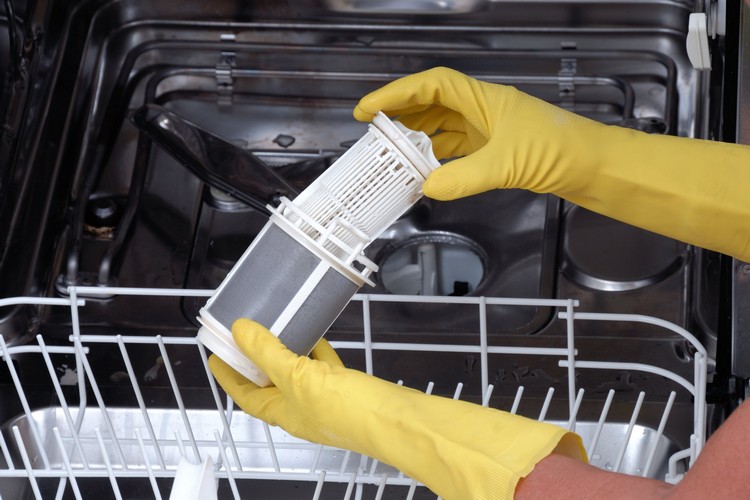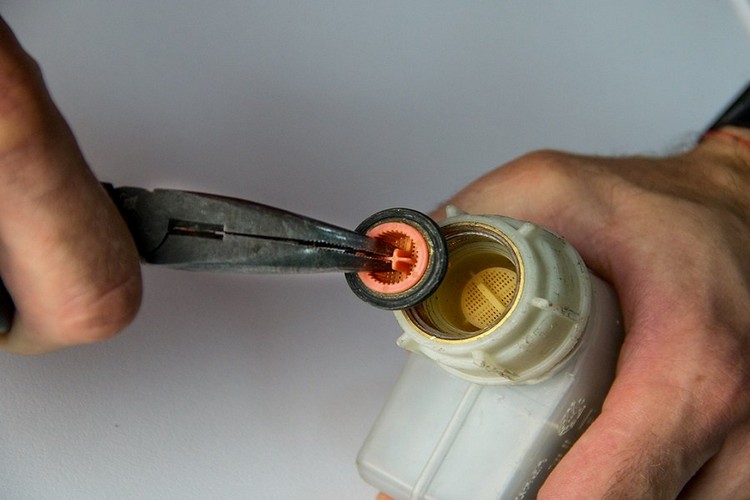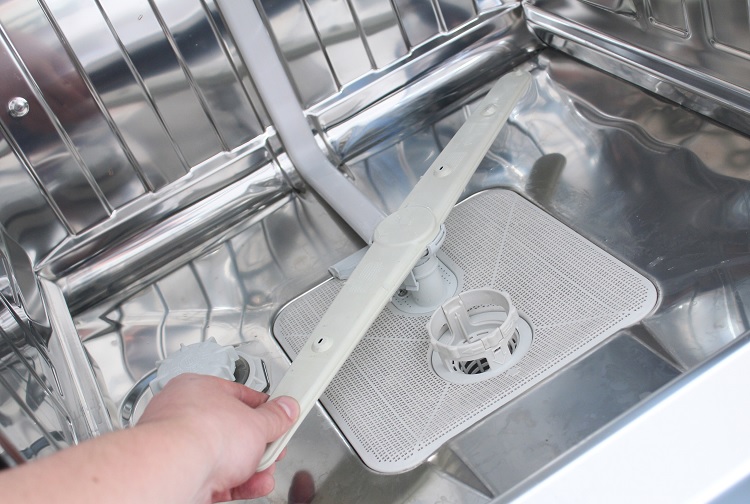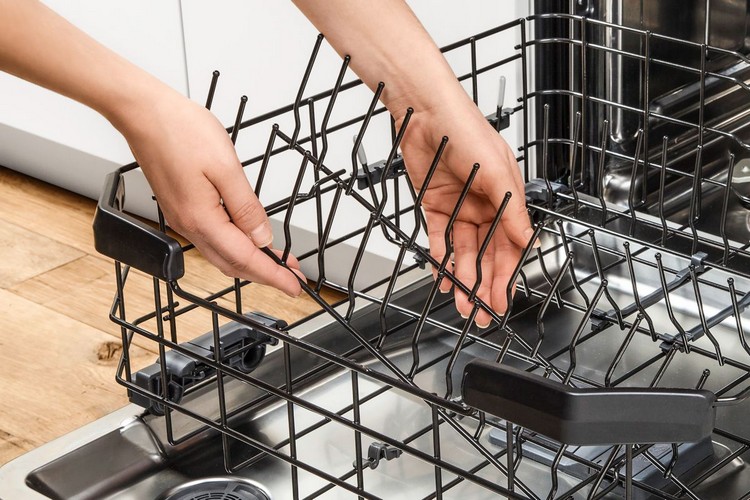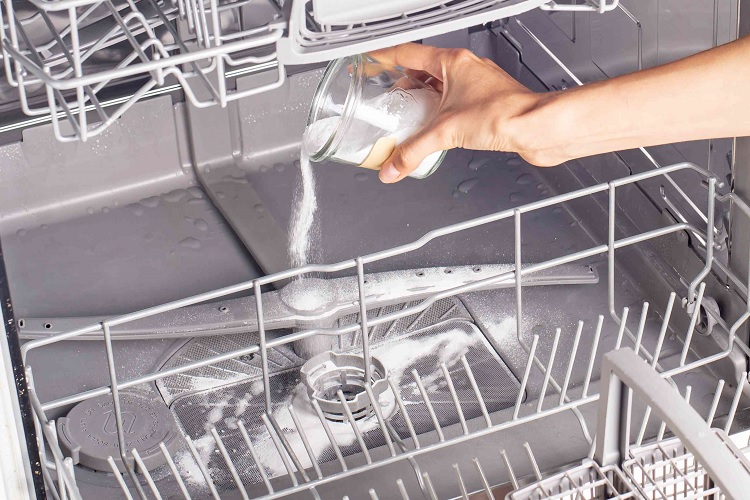Here's how to clean your dishwasher at home - the best detergents and remedies
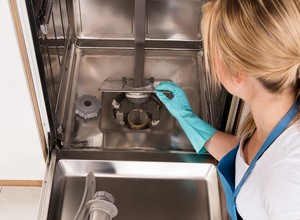 The dishwasher makes life so much easier when it comes to removing glass deposits, grease stains and smudges, bad smells and dirt from plates, pots and pans.
The dishwasher makes life so much easier when it comes to removing glass deposits, grease stains and smudges, bad smells and dirt from plates, pots and pans.
Despite its direct purpose, the machine does not clean itself along with the dishes, but instead slowly accumulates the collected debris.
Without timely maintenance, the dishwasher will stop doing its job, dirt will remain on the dishes, the drain will work too slowly. There will also appear a number of problems, which may make it seem that the dishwasher has worked out, but this is not the case.
To prevent such consequences, it is recommended to carry out a comprehensive cleaning of the automatic dishwasher.
Table of Contents
- About Dishwasher Stains
- Dishwasher filter cleaning for dirt
- Cleaning the spray arms from debris
- Dishwasher pump manual cleaning process
- Dishwasher basket and grid cleaning
- Dishwasher interior cleaning
- Special products for cleaning
- Home made cleaners
- Preventive maintenance to extend the life of the limescale
- Useful Videos
About dishwasher soiling
Like any other appliance, the dishwasher is subject to dirt, and the manufacturers recommend cleaning it at least once a month. Depending on the frequency of use, it can be done less frequently.
The degree and speed of dishwasher soiling depends on several factors:
- The machine runs once a day or more often;
- The door is left closed after washing. In this case, there is a risk of mold inside the appliance;
- Hard water without softening salt for the dishwasher;
- Very dirty dishes: with food residues, burnt parts and solidified grease;
- Washing at low water temperatures;
- Washing plastic or wooden dishes not designed for the machine.
There are also several signs that signal the dishwasher needs cleaning:
- An unpleasant odor inside;
- Residual dirt or white streaks on dishes after washing them in the machine;
- Food residue inside the chamber;
- Plaque on the filter;
- Water starts to drain more slowly than usual.
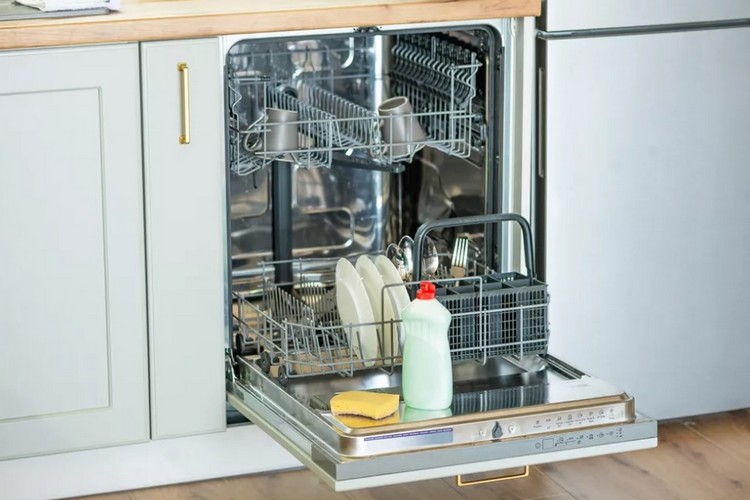
Cleaning the filters of the dishwasher from contaminants
Each dishwasher has two filters.
The first cleans the water in the machine from sand, small metal particles and impurities, while the second cleans the water that drains from the dishwasher, preventing clogs in the drain.
As a rule, dishes should be cleaned of excess dirt and food debris by rinsing in warm water before loading them into the machine. But it's impossible to get rid of excess at once, and a thorough rinse makes the dishwasher useless.
Its filters are designed to recycle small particles, after the restart they are washed by water to the bottom of the washing chamber.
Blockages in these filters can lead to several problems at once:
- The machine becomes too noisy;
- Dishes will remain dirty;
- The water will flow away too slowly;
- An unpleasant odor will occur.
Cleaning the dishwasher drain cleaner
The drain cleaning filter is located at the bottom of the washing chamber, and can be easily reached if you remove all the dish baskets before doing so. The filter is usually located under the water sprinkler and is removed by unscrewing it clockwise.
The filter consists of several parts that are attached to each other. It is not difficult to separate them in order to wash each one separately, the filter is put back together intuitively and according to the instructions supplied with the dishwasher.
The filter should be rinsed under running water.
But if a heavy plaque remains on it, it is acceptable to use chemical and natural detergents for cleaning:
- Laundry soap;
- Dishwashing liquid;
- Baking soda;
- Salt;
- Vinegar;
- Citric acid.
Brushes and toothpicks can be used to clean the filter grids.
Cleaning the Dishwasher Fill Filter
The water valve filter clogs more slowly than the garbage disposal filter, but that doesn't mean you can forget about it. The degree of its clogging depends directly on the hardness of the water, the harder the water, the more often it needs to be cleaned.
When a clog develops in the valve filter, there is a risk of stopping the intake of water.
In order to clean the filler filter, you need to de-energize the unit and stop the water supply. Then unscrew the filler hose and remove the filter from its seat.
It is washed in the same way under water. Usually you do not need to use chemicals to clean it, as in the case of the cleaning filter.
Cleaning the sprinklers from debris
The sprinkler can easily damage the dishwasher, because even though the water from the hose is already cleaned of coarse particles, there is still micro-sand and calcium salt in it, which the filter passes through.
To clean the atomizer it is necessary to:
- Remove the basket with the coring head, including the lower level;
- Bend back the latches and sprayer blades, pulling upward;
- Inspect the seals;
- Rinse blades, nozzles and assemblies under plain water;
- Return everything to its original position.
Although the fasteners may differ from one another on different PMs, they share the same assembly principle. For proper assembly, use the instructions supplied with the dishwasher.
Manual cleaning process of the dishwasher pump
The pump in the dishwasher is an important part of the system, it circulates water and detergent inside the machine.
The system is made to save water when rinsing, soaking and washing dishes. If the quality of dishwashing has changed dramatically, the cause may lie in a dirty pump, but it should be cleaned carefully.
The pump may be blocked by large food residues or foreign objects.
The dishwasher must be unplugged before cleaning begins.
Then follow the simple instructions:
- Remove the upper and lower basket;
- Remove all filters;
- Drain all water from the machine;
- Lift the pump cover with an object, grasp the tab on the cover and pull to remove completely;
- Check the impeller for integrity;
- If there are any foreign objects, carefully remove them;
After checking, reassemble the pump. It is also important to note that when cleaning the pump, its guard must never be removed.
Washing the baskets and racks of the dishwasher
Baskets are lattice trays that hold dishes, but they can also accumulate grease, food debris and fibers.
The principle of cleaning the grids and baskets is virtually the same as cleaning other parts. You can use a brush, soft microfiber cloths or a dishwashing sponge.
The baskets must first be removed from the dishwasher, then it is advisable to soak them in a detergent solution for a few minutes. The parts that cannot be removed from the machine will have to be cleaned and washed directly in the machine, pushing them forward as much as possible.
Using a brush and sponges, you must remove all food residues and dirt, and then wipe with a sponge on all sides of the grates.
For hard-to-reach places an old toothbrush will do, you can use medium-hard bristles, they will not damage the dishwasher.
Washing the interior of the dishwasher
The dishwasher chamber should be washed last, this is the final part of the whole procedure. But it should be touched only if other parts of the machine are not heavily soiled.
Cleaning of the washing chamber of the machine is carried out in several steps:
- It is necessary to prepare a detergent, in this case the manufacturers recommend resorting to the use of special products for dishwashers, as they safely remove grease, mold and rust;
- In the instructions to the dishwasher it is necessary to find the section detailing the cleaning mode where you need to pour the detergent and run the wash at the highest temperature.
Once the wash is finished, you can pour a cup of baking soda on the bottom, leave the machine for a few hours and then wash out the rest. The self-cleaning of the dishwasher will be completed.
Special products for cleaning
To clean the dishwasher at home, it is best to choose a special product designed for this purpose.
First of all, the use of this product will prolong the work of the machine, because the composition is chosen such that it will not harm the technique and its parts that can not be removed for washing.
The price of such products is usually not the lowest, so it is important to pay attention to the composition, not only for the safety of the machine, but also for your own safety. Unscrupulous manufacturers may substitute agents with aggressive chemicals, dangerous for human health.
Special products are easy to use. They are poured into the powder compartment and clean the machine in wash mode.
Limescale and grease removers
Often, special products for dishwashers are already predisposed to clean grease and limescale, their main task is to completely clean the dishwasher.
The following brands can be used for this purpose:
- Henkel Somat Machine Cleaner;
- Milit;
- Reinex.
Cleaning with improvised detergents
Not everyone likes to use household chemicals to clean appliances and prefer to use other classic options that are just as effective at cleaning the dishwasher of dirt.
This can be a powder, solution, dish detergent or special tablets.
Vinegar
This is a very aggressive substance and at first glance it seems that vinegar is able to clean everything. It is, but you should be careful with the use of vinegar, as it can have a negative effect on the rubber inside the dishwasher and on its parts.
If you use vinegar, then in small proportions and very rarely.
Borax
Sodium borate refers to a frequently used cleaning method.
The solution is mixed with plain water. In the resulting mixture you need to moisten the sponge and wipe with it the working cavities, seals and other parts.
The solution can also be poured into the powder compartment and the machine can be turned on in washing mode.
Citric Acid
This is a universal and the least harmful composition.
The mixture will remove limescale, grease, rust and mold, and the amount of citric acid determines the level of contamination of the machine.
For an average level of soiling, you will need 300 grams, which should be poured into the powder compartment. This amount of acid is enough to clean the dishwasher.
Preventing soiling to extend the life of the dishwasher
There are a few simple tips that will reduce the risk of dishwasher breakage and increase the life of your dishwasher:
- Leave the door ajar after each wash to allow moisture to escape faster and not provoke mold;
- It is advisable to wipe the rubber bands inside the machine after use with a dry cloth and the doors outside with a damp cloth;
- For cleaning in washing mode, it is recommended to use special products and very rarely to resort to other methods, since if used frequently, they may have the opposite effect and affect the performance of the dishwasher;
- To engage in weekly dishwasher cleaning.
By following the recommendations from the first days of use, not only will your dishwasher last longer, but it won't take a lot of time in the days set aside to clean it.
The daily care will facilitate the process and eliminate the need to use aggressive chemicals. The technique is not demanding in the care, if it is carried out in a timely manner.
Useful Video
The video trailer shows all the ins and outs of washing your dishwasher at home:



